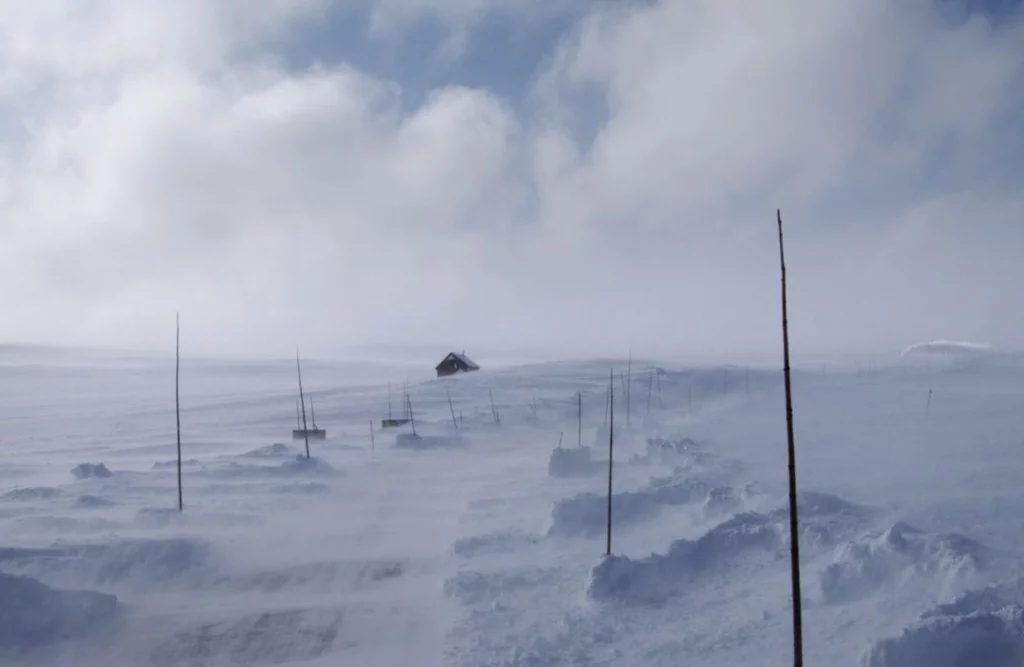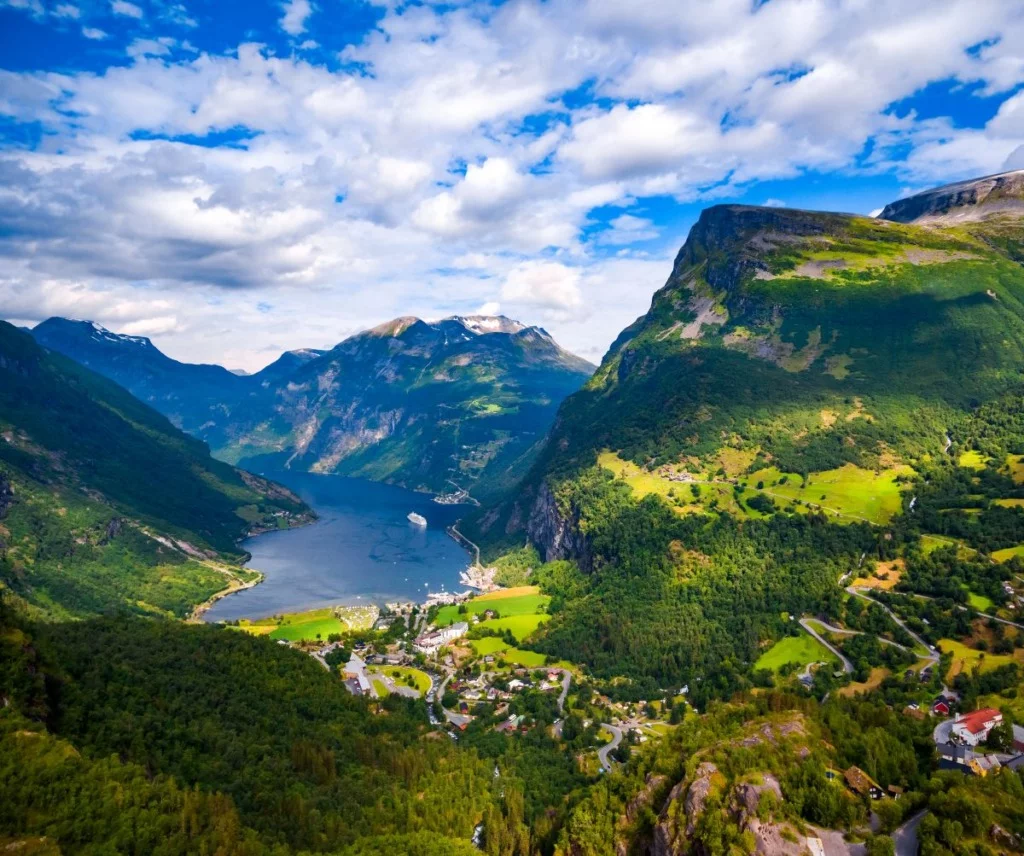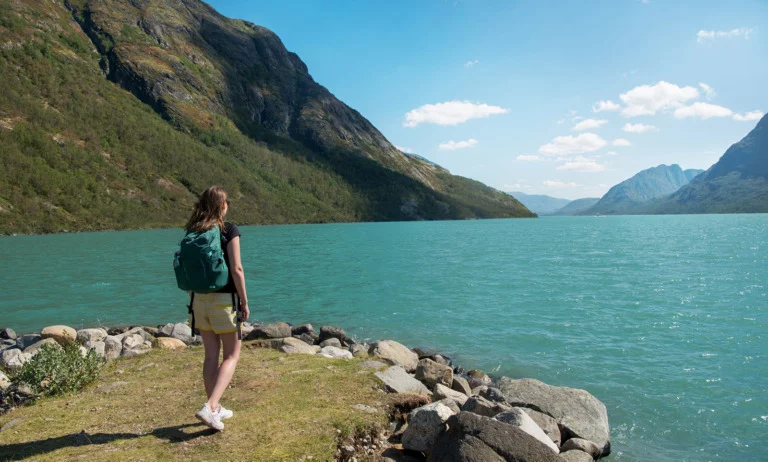Hiking in Norway is a popular pastime among both locals and tourists. The national hiking trail program aims to improve sustainability of these paths.
Norway has many hiking trails with great appeal, especially among international visitors. For example, the number of visitors to Trolltunga increased to 75,000 from just 5,000 in the space of a few years.

But the growing popularity is causing problems with increased wear and tear and the accumulation of rubbish, among other issues.
Norwegian authorities have introduced a national hiking trails program (Nasjonale turiststier) to improve sustainability planning for future hiking in Norway. The aim is for the trails to withstand high visitors numbers without deterioration in the natural and cultural experience.
According to the Norwegian Environment Agency, the hiking trails will be “good examples of sustainable Norwegian tourism, and contribute to increased local value creation.”
Table of Contents
Handling high visitor numbers
The program has been established in response to the challenges associated with very high visitor numbers.

This includes extensive wear and tear on the trails and challenges with rubbish. But there are also other challenges, such as the need to provide information on the degree of difficulty of the trail and other safety issues.
Increased numbers also increase the need for an emergency preparedness plan in the case of, for example, a sudden deterioration in weather conditions.
The national hiking trails program aims to solve some of these challenges. But importantly, it is also designed not to facilitate more development than necessary in order to protect the natural environment. The right of public access should also be maintained.
The program reminds me very much of the national scenic routes program for tourist roads in the country. 18 designated routes have received substantial funding for improvements and facilities over the years.

Trolltunga awarded national status
Thanks to the iconic end point, the hike to Trolltunga is one of Norway's most famous trails. The roundtrip hike takes most of a full day, but that doesn’t stop tourists from flocking to the hotspot throughout the summer season.
The trail has become the latest to be given the national hiking trail status. “It’s a world-famous icon where nature’s own work constitutes the attraction,” said the Norwegian Environment Agency's Ellen Hambro in a press release to announce the award.

Trolltunga is the fourth trail to be given the national status. The three others are Fosseråsa in the Geiranger region, and Kjerag and Preikestolen by the Lysefjord.
Fosseråsa
The spectacular Geirangerfjord is known as a top cruise destination. But it's also an immensely popular hiking destination, which opens up access to many cultural gems in the UNESCO World Heritage site area.
Fosseråsa was the first trail awarded the national status. The popular route split into three stages is described by tourist authorities as a “powerful nature experience by the river.”

Highlights for hikers include many panoramas of the fjord and waterfalls including Storsæterfossen, which you can walk behind. The three stages are clearly marked and there are several information boards along the route.
Preikestolen
The Pulpit Rock has been a popular international destination for decades, but is now more popular than ever. In a typical year, more than 300,000 visitors make the hike to Preikestolen each year.

The roundtrip hike is just over 8 km, but is steep and challenging in parts. Successful hikers are rewarded with unforgettable views of the Lysefjord. Together with Kjerag, significant work has gone into planning for rising visitor numbers.
Kjerag
Also in the Lysefjord region, the Kjerag tour is somewhat more demanding. The 11 km round trip includes a total ascent of 780 metres. It goes over steep cliffs and down into lush bog areas.
At 1,084 metres above sea level, Kjerag is the highest peak in region. The plateau is popular among base jumpers and mountain climbers, while many hikers make the trip for the photo opportunity at the world-famous boulder Kjeragbolten.

More national hiking trails to come
There will be a maximum of 15 routes awarded the national status. Trails are given the status for up to 5 years and must then be re-authorised to retain the status.
Only trails where the current situation and future plans in the immediate area take into account biodiversity, outdoor life, safety and landscape qualities can be awarded the status.
In order to qualify for the national status, a hiking trail must have a visitor strategy prepared for the area in collaboration with various actors.
Grants for Norway's hiking trails
In addition to the status, the program also gives grants for work on trails with a high number of visitors, especially international tourists. Trails with national status get priority, but other trails can also be awarded money for visitor management studies and measures.

A focus on visitor management
Comprehensive and long-term planning through visitor management is the core idea of the national hiking trails program. Visitor management means that you facilitate and manage the use of an area in the best possible way, so that you optimize:
- the experience for the visitors
- local value creation
- protection of natural values
This entails a need for good knowledge of where there are vulnerable natural values, information about the visitors and about the tourism's current or expected future use of the area in question.
The Norwegian Environment Agency directs the work on behalf of the Ministry of Climate and the Environment. They process applications for both the status and funding.

